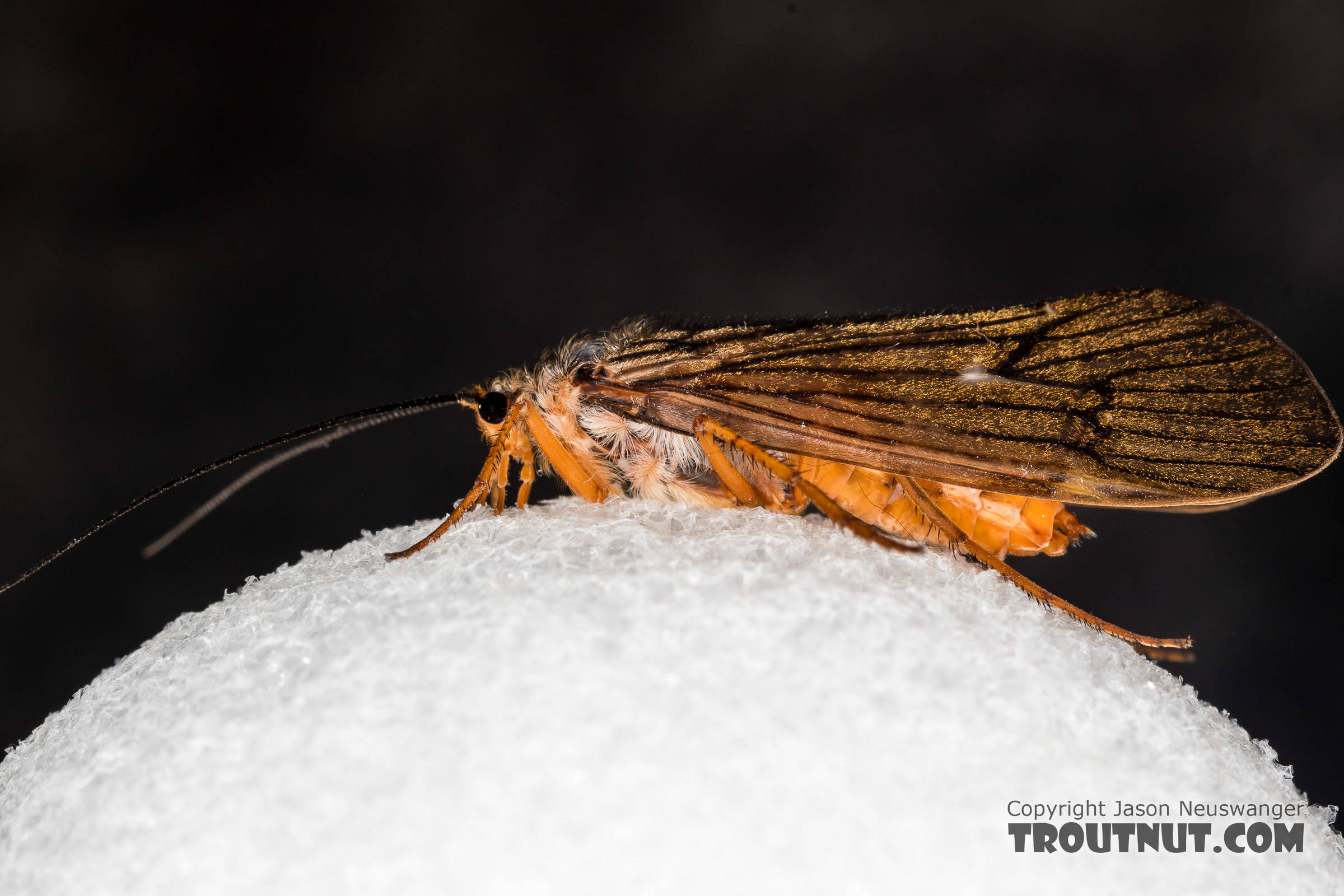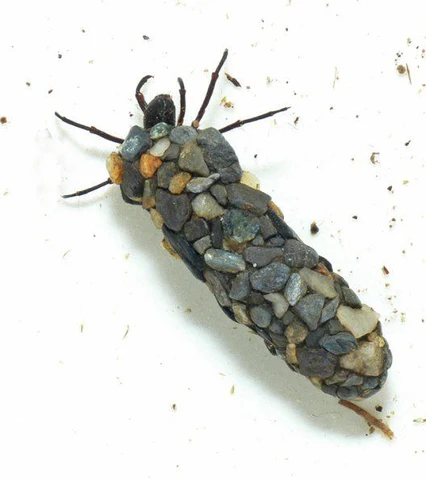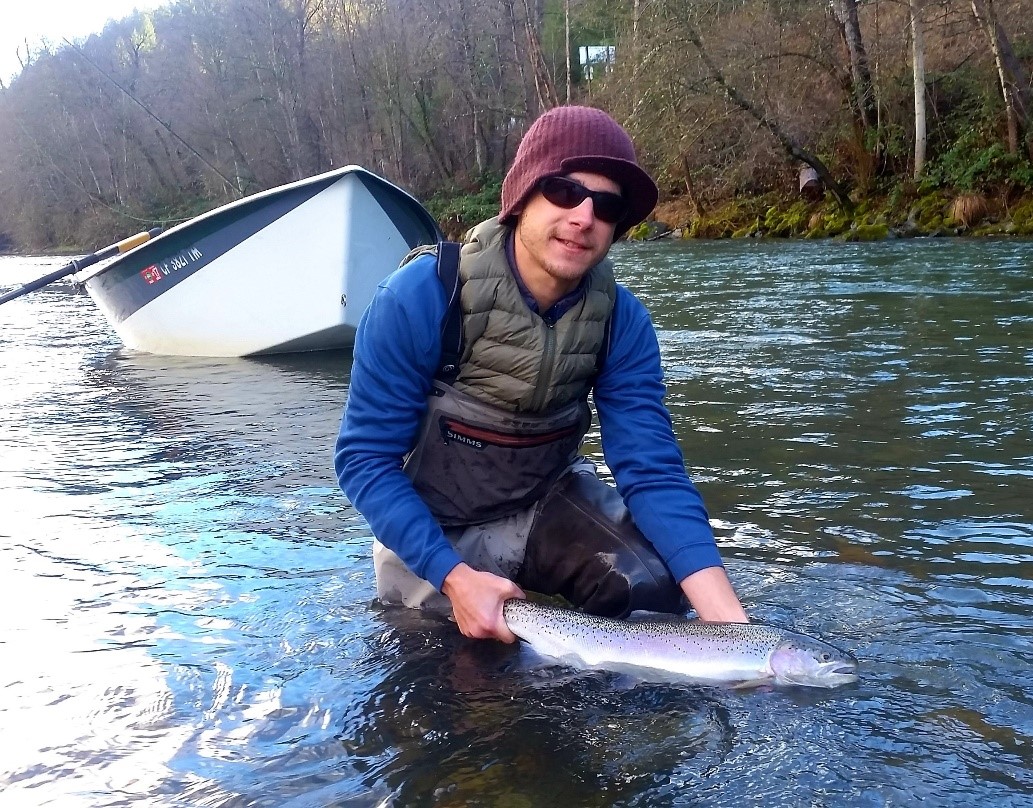
October Caddisflies genus Dicosmoecus
Dicosmoecus (dee-co-smee-cus) caddisflies are better known by the common name ‘October caddisflies’. These caddisflies are notable for there extremely large size (1-2 inches), their concentrated emergence window (October), and their abundance especially in streams containing anadromous fish. These characteristics make it one of the most important hatches to not only fly-fishermen, but to wildlife such as birds as well.

Dicosmoecus like other caddisflies have three life stages: larvae, pupae, and adult. Larvae build cases out of small rocks which serves as protection and their housing. They drag these cases around while foraging for food, mostly algae and detritus. Dicosmoecus are especially notable by the large distances they can cover (up to 25 meters per day) to forage (Resh et al. 2011).
They continually grow and have to build new cases as the old ones become too small. After molting five times (called instars), they attach their cases to the underside of rocks and began to pupate. After about a month of pupating, they cut a hole in their case and swim to the surface before shedding their exoskeleton one more time and becoming adults.
Caddisflies, unlike mayflies, will live for several weeks while they seek out a mate. You will often see them active at dusk and just after sunset. Keep a look out for the large moth-like bugs during sunset for the next few weeks.
References
Resh, V.H., M. Hannaford, J. Jackson, G.A. Lamberti, and P.K. Mendez. 2011. The biology of the limnephilid caddisfly Dicosmoecus gilvipes (Hagen) in Northern California and Oregon (USA) streams. Zoosymposia 5:413-419.
Images courtesy of Red’s Fly Shop and Troutnut.com

Chris Laskodi, M.S., Fish Ecologist – Yurok Tribal Fisheries Department
Chris serves as the fish biologist/ecologist for the TRRP in the program’s Science branch. Chris has worked on the Trinity River since 2015, previously serving as a fish biologist for the Yurok Tribe and a fisheries technician for the US Fish & Wildlife Service. Chris holds a B.S. in Wildlife, Fish and Conservation Biology from the University of California, Davis and a M.S. in Aquaculture/Fisheries from the University of Arkansas at Pine Bluff. In his free time, Chris enjoys taking friends and family fishing on one of the many watercraft available to him.
